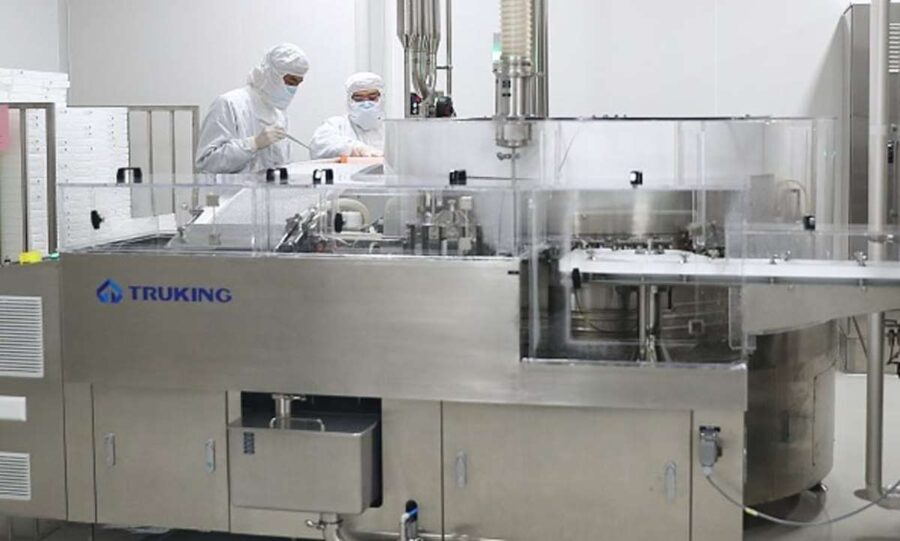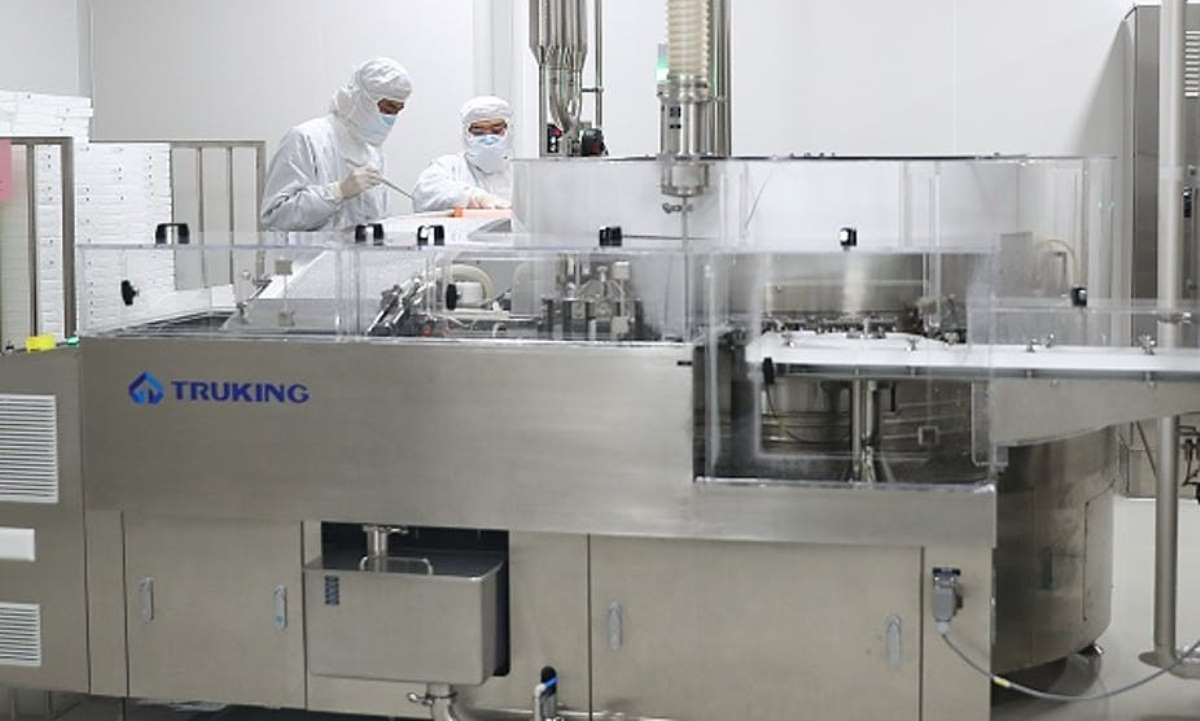
A COVID-19 Vaccine Plant in Africa? This is What it Would Take to Build One
The COVID-19 crisis has revived discussions on localising vaccine manufacturing to the African region to reduce the dependence on imports. The fact that Africa is lagging so far behind on the COVID-19 vaccination compared with Europe and North America has highlighted the importance of the issue. Most African countries depend on the WHO-sponsored COVAX scheme, […]

The COVID-19 crisis has revived discussions on localising vaccine manufacturing to the African region to reduce the dependence on imports.
The fact that Africa is lagging so far behind on the COVID-19 vaccination compared with Europe and North America has highlighted the importance of the issue. Most African countries depend on the WHO-sponsored COVAX scheme, which buys COVID-19 vaccines from manufacturers by pooling demand, thus enhancing their bargaining power. It also offers discounts for least developed countries.
However, the scheme is underfunded and competes with national authorities procuring vaccines directly from the manufacturers, and thus lacking a secure supply. Moreover, the supply shortage became worse when the Serum Institute of India, previously the main supplier to COVAX, focused on domestic needs when the pandemic spread in India.
So what would actually be needed to localise vaccine manufacturing in Africa?
I argue that the main constraints are not patents but time, knowledge transfer and capital. To overcome these constraints, a broad co-operation of many partners is necessary.
What’s in place
Several companies have announced their intention to produce COVID-19 vaccines in Africa. These include Aspen in South Africa and Saidal in Algeria.
Expertise related to other types of vaccines also exists, for example, in the Institut de Pasteur de Dakar. However, most of these plants focus on the final stages of the value chain, filling vials and packaging. Across Africa, competences related to earlier stages of the value chain are very limited.
A key challenge for local manufacturers of vaccines – and drugs more generally – is competition from India. Indian companies have developed pharma competences, especially in generic medicines and vaccines, and benefit from a large domestic market.
National health services in developing economies thus face a basic dilemma: should they import pharmaceuticals from India, or should they procure from local companies that operate at higher costs?.
As most healthcare providers operate under tight budget constraints, they typically opt for imports.
Thus, local companies in Africa would find it very challenging to be cost-competitive in the longer run when the current worldwide scarcity of COVID-19 vaccines is overcome as new plants become operational around the world.
What are the key obstacles an African vaccine hub would have to overcome?
Constraints
Time: It takes time to design and build a manufacturing plant, to obtain all the regulatory approvals, and to establish quality control processes. A particular challenge is that vaccines are living, genetic organisms, consisting of large and complex molecules that require complex biologic processes for their creation, which need to be grown organically.
Moreover, manufacturing depends on supply chains for ingredients and materials, which in this industry generally are global. Globally, supply chains for COVID-19 vaccines have been hampered by manufacturing bottlenecks, monopolised supply, patents and even export bans. In addition, national trade barriers within the region can increase the costs of sourcing critical inputs.
Given all these constraints, a potential new plant in Africa would not be operational in 2021, and would not help solve the immediate need for vaccines now. Yet, vaccine building vaccine competences is a goal with longer-term benefits.
Knowledge transfer: Building and operating a vaccine plant requires state-of-the-art knowledge – especially for new types of vaccine such as mRNA, including how to build and operate a plant, and how to control its quality. Such knowledge is typically tacit and held by people and teams involved in the research and development. Thus, it needs to be shared by direct interpersonal interaction; it cannot be obtained by reading patents or other public sources.
This contrasts with drugs, for example, that can be reverse engineered, enabling generic manufacturers to develop and scale-up production without the collaboration of the patent holder.
Thus, new manufacturers of vaccines need to acquire and absorb a lot of knowledge, which practically cannot be done (at least not in a timely fashion) without direct collaboration with those who hold the knowledge. At the same time, national regulatory authorities need to address their capability gaps.
Investment capital: Big investment projects with revenues far in the future need risk capital to finance the construction. The first question any investor – be they an aid organisation or a private investor – will ask is: what is the demand for your product when you are ready to go to market?
Operating costs in Africa are likely to be higher due to lesser scale of the operation, and more complex logistics. Thus, an investor would be concerned that the plant is not price-competitive in normal situations – that is without the current global shortage of vaccines in 2021.
This concern can be addressed by advance purchase commitments, preferably with up-front payment (that’s how the UK and the US secured their early lead in vaccine supply).
As the likely buyers mostly are state-related agencies, such as national health systems, they would have to sign purchase agreements. Ideally, several national health systems would cooperate to contract one manufacturer in the region to enable scale of the operation. Yet, they might be reluctant to commit given the prospect (albeit uncertain) that imported vaccines might be available at a cheaper price in two to three years.
Once, national health systems – or other potential buyers – have indicated their commitments, there may also be an opportunity for effective development aid. Donors may for example subsidise the purchase agreements. Or, development banks may take equity in the new plant and share the risk of the operation.
Intellectual property rights: A waiver or a compulsory licence for key technology, including ingredients and materials, would help lower costs. But it would need to be valid over the operating lifetime of the plant. In other words, a waiver “until the end of the pandemic” is of little help.
The World Trade Organisation’s TRIPs agreement in principle allows countries to impose compulsory licensing in cases of national emergencies. However, a recent review study has shown that this possibility is rarely used – the requirements are too complex, especially for countries without local manufacturing capacity.
Reform of the TRIPS agreement would help, notably by simplifying compulsory licensing, or by reducing the scope and length of intellectual property rights. At a minimum, this would strengthen the bargaining power of local players engaging with the global industry.
Local vaccine manufacturing in Africa is both feasible and desirable because it helps Africa to respond to future pandemics. To achieve that, a broad regional partnership with substantial up-front commitments is necessary.
First, to enable an efficient scale of operation, national authorities across the region need to collaborate to coordinate health sector procurement, regulation and quality control of the medicines, and trade policies.
Second, owners of the technology should be part of the partnership, not only to facilitate the transfer of tacit knowledge but also to ensure quality control. BioNTech, for example, has stated that it is willing to engage in this type of collaboration.
Third, development organisations may support such ventures by bringing partners together, co-funding advance purchase agreements, and perhaps by investing in the plant itself.
Policymakers may help to create such partnerships by simplifying compulsory licensing rules. In contrast, a time-limited patent waiver would achieve little.![]()
Klaus Meyer, Professor of International Business, Ivey Business School, Western University
This article is republished from The Conversation under a Creative Commons license. Read the original article.
